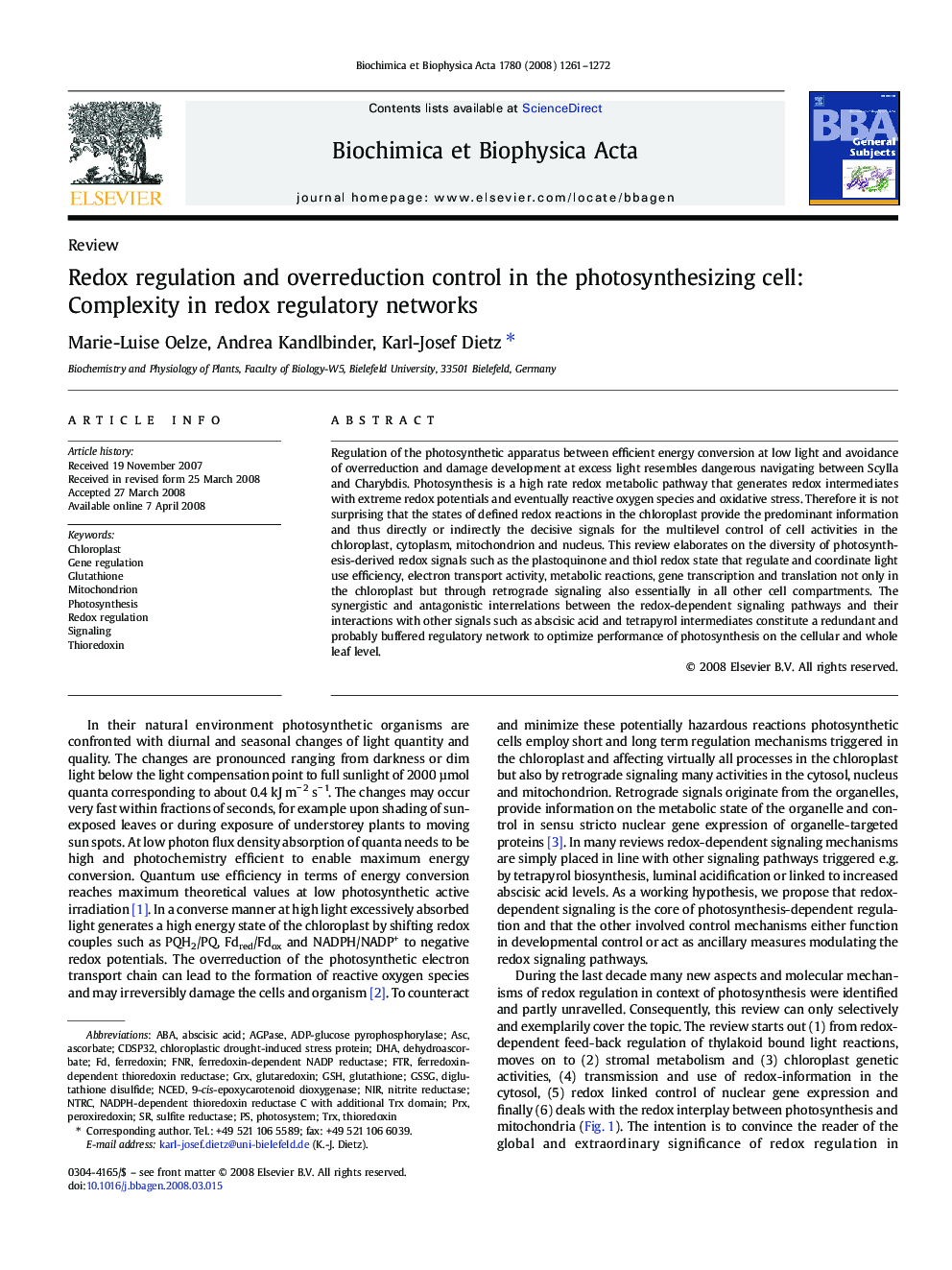| Article ID | Journal | Published Year | Pages | File Type |
|---|---|---|---|---|
| 1948348 | Biochimica et Biophysica Acta (BBA) - General Subjects | 2008 | 12 Pages |
Abstract
Regulation of the photosynthetic apparatus between efficient energy conversion at low light and avoidance of overreduction and damage development at excess light resembles dangerous navigating between Scylla and Charybdis. Photosynthesis is a high rate redox metabolic pathway that generates redox intermediates with extreme redox potentials and eventually reactive oxygen species and oxidative stress. Therefore it is not surprising that the states of defined redox reactions in the chloroplast provide the predominant information and thus directly or indirectly the decisive signals for the multilevel control of cell activities in the chloroplast, cytoplasm, mitochondrion and nucleus. This review elaborates on the diversity of photosynthesis-derived redox signals such as the plastoquinone and thiol redox state that regulate and coordinate light use efficiency, electron transport activity, metabolic reactions, gene transcription and translation not only in the chloroplast but through retrograde signaling also essentially in all other cell compartments. The synergistic and antagonistic interrelations between the redox-dependent signaling pathways and their interactions with other signals such as abscisic acid and tetrapyrol intermediates constitute a redundant and probably buffered regulatory network to optimize performance of photosynthesis on the cellular and whole leaf level.
Keywords
Related Topics
Life Sciences
Biochemistry, Genetics and Molecular Biology
Biochemistry
Authors
Marie-Luise Oelze, Andrea Kandlbinder, Karl-Josef Dietz,
